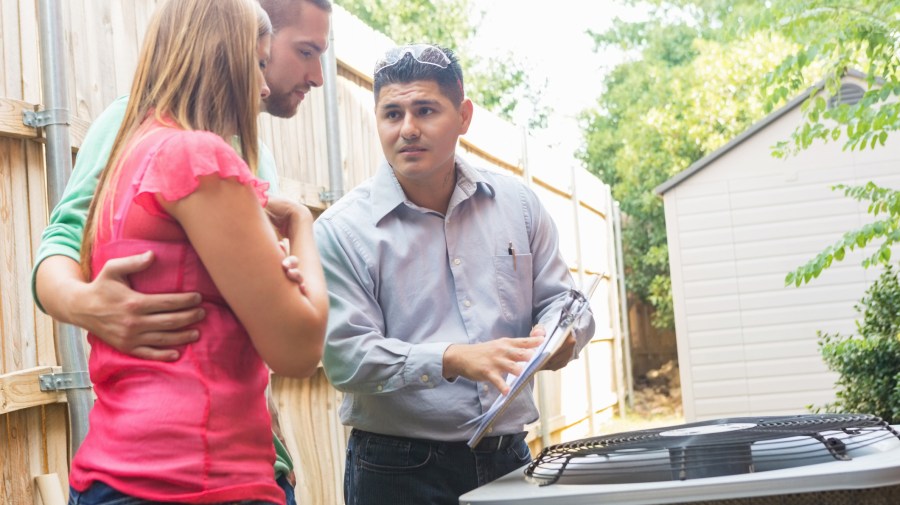
Regardless of the season, keeping your home at an ideal temperature ensures that everyone who lives there is always comfortable and all the other systems and appliances in your home run efficiently. Both excessive heat and excessive cold are bad for inhabitants, appliances, plumbing fixtures, electrical systems and more.
Although the name may sound a bit misleading, home heat pumps take care of both heating and cooling needs in your home to provide year-round comfort. These systems are available anywhere and are particularly popular in areas that experience dramatic seasonal variations in temperature. If you’re in the market for a new heating and cooling system for your home, here’s what you need to know about installing a home heat pump.
What Is a Heat Pump?
Despite the name, a heat pump is similar to a large central air conditioning unit. However, instead of only circulating cold air throughout your home, a heat pump allows you to reverse the operation to blow hot air throughout your house. In summer, it draws hot air out of your home and pumps chilled air in to replace it. In winter, it draws outdoor air into the unit, warms it using an electric heater and circulates the warm air through the rooms of your home.
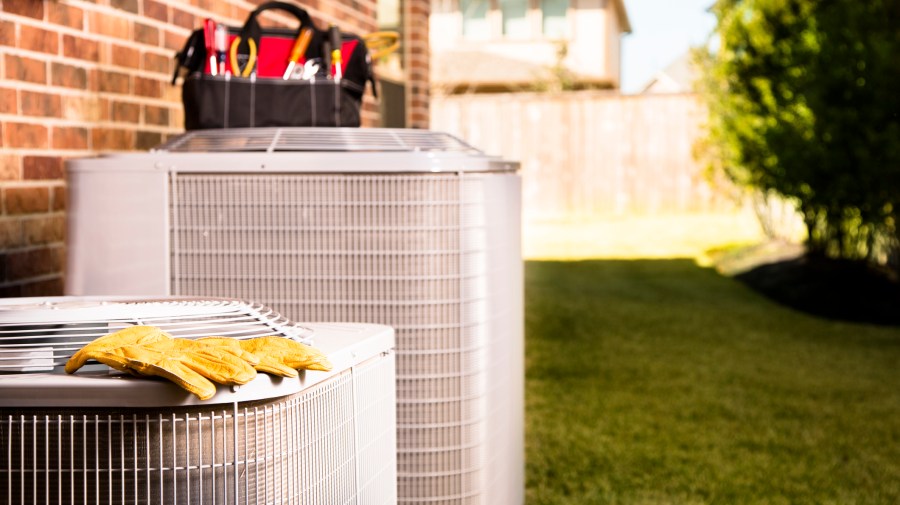
This functionality makes heat pumps an efficient energy choice for temperature control, particularly in areas where the temperature varies significantly throughout the year. Additionally, you only need a single system to accomplish the same tasks as separate furnace and central air conditioning units.
Pros and Cons of a Heat Pump
When you’re trying to decide on heating and cooling systems, heat pumps have several benefits and drawbacks to consider. Overall, they are a relatively low-cost option, both in the short term and the long term. You only have to purchase a single system up front, which generally costs less than purchasing two separate systems, depending on the brands and sizes you choose. They are also energy efficient for ongoing use, which helps keep monthly utility bills at reasonable levels.
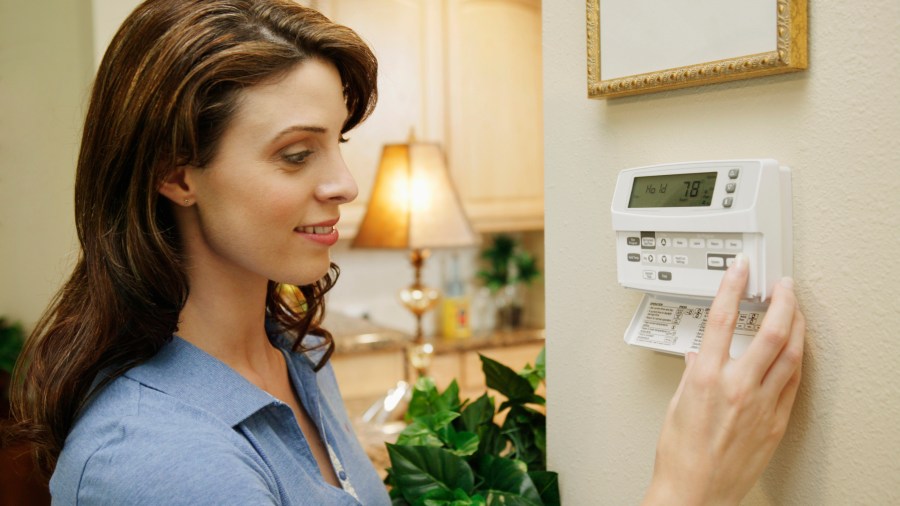
This efficiency also comes into play in terms of how quickly a heat pump can warm up or cool down your home. Heat pump systems work especially well in temperatures above 40 degrees Fahrenheit. Some continue to operate well at temperatures as low as 5 degrees Fahrenheit, but you can expect to pay more for models that operate reliably and efficiently when it’s well below freezing outside. Models that run well in super-low temperatures are also harder to find.
If you live in an area that frequently drops into the 20-degree range or lower in the winter months, you may find it necessary to supplement a heat pump with a conventional furnace. Additionally, heat pumps run on electricity, which means if you experience frequent power outages in your area during icy winter months, you could be left without a heat source if you don’t have a backup plan.
Average Cost of Home Heat Pumps
Besides the actual price tag on the heat pump you choose — which varies a great deal based on brand and size — you have to account for the cost of labor for installation in your area when estimating the price you will have to pay for a heat pump system. Without labor costs, heat pumps typically cost between $100 and $2,800, depending on the quality and capacity of the unit, but supplies and labor for installation add to that cost substantially, coming in at a national average of $5,700 for total system and installation cost.
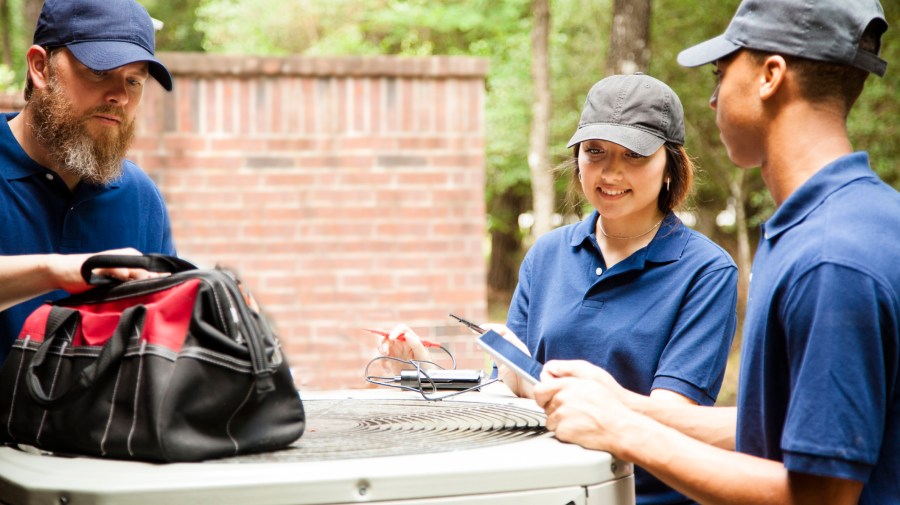
If you want to save some extra money on your heat pump project — and, of course, you do — look into the requirements for tax credits for installing energy efficient appliances in your home. Both electric and geothermal heat pump types are often eligible for these credits, but the pump you choose must meet certain standards established by the U.S. Department of Energy to qualify for the credits.
Estimating Heat Pump and Installation Costs
Although starting with an idea of the average heat pump installation cost in the U.S. is helpful, you still need to consider many variables when estimating the cost of installing a new heat pump system in your specific home. You may have some flexibility on factors like the quality and size of the unit you choose, but you won’t be able to control the average cost of labor in your area. Additionally, your contractor will need to purchase specific supplies and materials for the installation, so make sure these costs are included in any estimates you receive.

In some cases, it might be necessary for a contractor to use special equipment to prep the outdoor site for the condenser or to drill through the side of your home. For example, penetrating exterior walls made of brick or stone requires different equipment than drilling into vinyl siding. Hiring a contractor that already has all the necessary equipment for the job could save you a lot of money on the total cost.
Heat Pump Installation Process
Depending on the type of heating and cooling systems currently installed in your home, it may not be necessary to penetrate an exterior wall of your home to install new lines. However, even if you already have a system with an outside unit that runs pipes into your home through an exterior wall, that doesn’t mean this type of installation will be easy. Unless you’re an accomplished DIYer with heating and cooling experience, it’s wise to hire a licensed HVAC contractor to set up your heat pump and get it running. In fact, installing the unit yourself could void the warranty on the system.
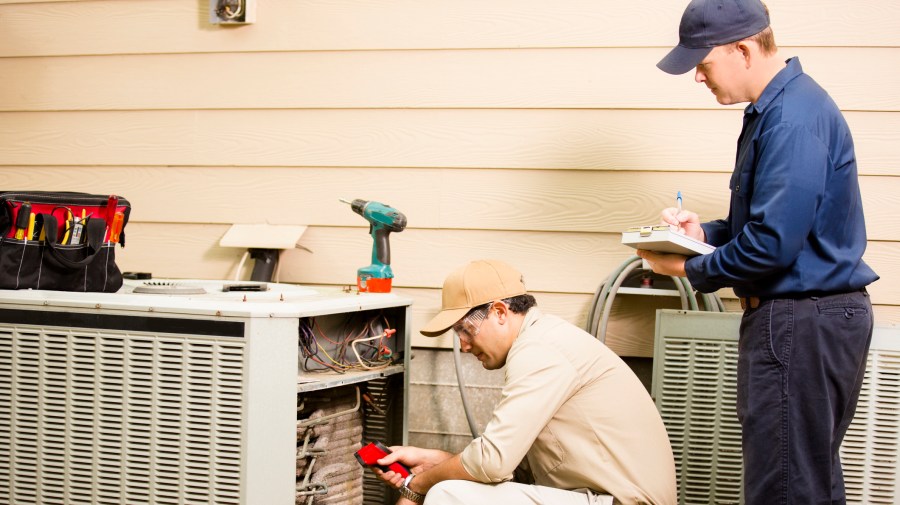
Prior to installation, the contractor will prep the site outside your home where the pump unit will sit to ensure the ground is level. The heat pump needs to sit about four feet away from your home, and you should maintain at least 20 feet of open space above the unit and in front of it. The technician will drill holes for the pump’s lines and install the large condenser unit outside your home. They will mount the air handler, which blows the air into your house, on the inside wall opposite the condenser. Once the two units are connected and attached to power, your new heat pump is ready to use.





